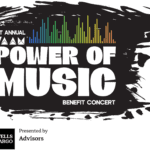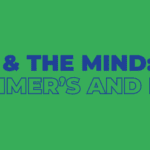26 Jan The Impact of Music Experiences on Emotions, Mental Health & Suicide Prevention
ABSTRACT: In 2017, the rapper DJ Logic wrote and titled a song after the National Suicide Prevention Lifeline phone number: “1-800-273-8255.” It was a hit running its way up the Billboard charts that year. Calls to the Lifeline that year increased almost 30%, primarily due to the song. As a result of the increased calls, researchers have evidence of a reduction in the suicides that year, perhaps as many as 250 lives. Through his use of the medium of music, DJ Logic wrote a song grounded in hope and resilience. That message of hope is what had researchers and suicidologists incredibly encouraged while acknowledging the medium, itself, was unique considering how prevention messaging was typically delivered. The protective effects of stories of hope and resilience from suicidal crises through various forms of media is referred to as the Papageno effect (Niederkrotenthaler, et al., 2021). Some studies of such stories have indicated a reduction in suicidal thoughts (Niederkrotenthaler, et al., 2021). While his message was one of hope, it is difficult to deny his medium of choice – music – was the catalyst. And considering what we know about dopamine – a neurotransmitter that plays a role in our emotional, cognitive, and behavioral functioning – and music, might Logic’s song have played a self-regulating role, and consequently, an intervention, for some of its listeners? More importantly, considering most people who die by suicide have a depressive disorder (depression), what must we understand about the opportunities and benefits music provides when responding to depressive disorders.
In September of 2022, the CDC stated suicides had increased in 2021, after following two years of decline (Curtin, et al., 2022). While those in the suicide prevention field are still making sense of the data, even to the layperson, it’s no surprise suicide continues to be a “front-page” issue. And while the pandemic has brought mental health to the fore, we must continue our efforts to better understand how music can be used as therapy, as an intervention, and as a vehicle for hope.
This abstract explores some of the more recent research regarding music as therapy, and more specifically, how it interacts with depression, ultimately allowing us to better understand how it can be used to prevent suicide.
Music as Therapy
Music has a powerful effect on people which is widely recognized, but the mechanism behind this impact is not yet fully understood. A substantial body of research has explored music therapy as an intervention for a wide range of issues, including physical illnesses and mental health disorders. Music therapy is the clinical use of music interventions, conducted by a trained music therapist, consisting of regular scheduled meetings with a music therapist (Aalbers et al., 2017). Music therapy uses “music experiences within a therapeutic relationship to address clients’ physical, emotional, cognitive, and social needs” (Stegemann et al., 2019, p. 1). Music therapists are “accomplished musicians who have deep knowledge of how music can evoke emotional responses to relax or stimulate people, or help them heal” (Merz, 2015). Music therapy can target a variety of physical and mental health goals, such as lowering blood pressure, reducing stress, strengthening memory, enhancing self-regulation skills, managing pain, and improving coping and self-esteem. Music therapy is an evidence-based treatment. Research has demonstrated the effectiveness of music therapy with a range of health and mental health challenges, including depression (with potential implications for suicidality), autism, ADHD, Alzheimer’s disease, substance use disorders, trauma, cardiac issues, pain, anxiety, and stress during medical procedures, neonatal care, and substance use disorders (Stegemann et al., 2019). Music therapy interventions include creating music, singing or playing instruments, or listening to music. One survey of board-certified music therapists in the United States (N=64) found that the most typically used music therapy interventions were song discussion, lyric analysis, and song writing/song composition (Johnson & Heiderscheit, 2018). Music therapy can be delivered in a wide range of settings, such as inpatient psychiatric hospitals, medical settings, or outpatient settings, and with both adults and children (Stegemann et al., 2019). Musical skills or innate talent are not necessary for music therapy to be effective. Instead, what is required is active participation (Aalbers et al., 2017). More rigorous research is needed to fully understand the mechanisms that underly music therapy (Stegemann et al., 2019), including the use of neuroimaging to examine the impact of music therapy on the brain (Marquez-Garcia et al., 2021). There is no evidence that music therapy is superior to traditional psychological therapies but there is evidence that it should be considered in combination with traditional psychological therapies if the client is willing and/or interested (Aalbers et al., 2017). There is little data available comparing types of music therapy, so no conclusions can be drawn about the superiority of one form of music therapy over another.
The research on the impact of music therapy has focused more on some areas than others. While systematic reviews have highlighted the effectiveness of music therapy for depression (Aalbers et al., 2017), autism (Marquez-Garcia et al., 2021), and stress reduction (de Witte et al., 2022), the research on the effectiveness of music therapy on depression and stress reduction is more rigorous than that exploring music therapy with autistic individuals. Research on music therapy with adults has been more robust than music therapy with children (Aalbers et al., 2017; de Witte et al., 2022; Stegemann et al., 2019). When looking at the effects of music therapy on children, the highest quality of evidence on the effectiveness of music therapy interventions is with autism spectrum disorders and infants in the NICU (Stegemann et al., 2019). More research is needed on music interventions with children, to include depression and suicidality.
Music therapy can effectively address depression and stress. Findings from a 2022 systematic review of music therapy for stress reduction (N=47 research studies), demonstrated that music therapy had a medium to large effect on stress related outcomes (de Witte et al., 2022). Larger effect sizes were found for clinical controlled trials compared to randomized controlled trials, for studies comparing the treatment group to a waitlist rather than treatment as usual, and for studies conducted in non-Western countries compared to Western countries. Further research is needed to determine how music therapy compares to treatment as usual. Other research has suggested it can be a powerful supplement to treatment as usual, as opposed to an alternative or replacement (Aalbers et al., 2017). A 2017 systematic review of music therapy for depression (Aalbers et al, 2017) found that when music therapy was included as a supplement to treatment as usual, improvements in depression, anxiety, and functioning (e.g., employment, leisure activities, relationships) were observed. Most of the research has explored short-term music therapy interventions and has not explored longer-term interventions (>6 months) (Aalbers et al., 2017).
There are some promising exploratory studies of music therapies to address additional issues. For example, one study of 26 parent/adolescent dyads, with high levels of conflict and parents with a history of trauma, found that a music therapy titled “Tuning Relationships with Music” reduced conflict, improved parents’ nonverbal communication and emotional responsiveness, and decreased their reactivity (Colegrove et al., 2018). A small (N=9) study of adolescents with depression found that a music therapy treatment plan was feasible and acceptable to adolescents, and improved depressive symptoms, positive coping, and health related quality of life (Geipel et al., 2022). Music therapy may be a promising intervention to address anxiety and depression for mothers of infants in the NICU. One small study in Brazil (N=33 mother/infant dyads) found that compared to the control group, mothers who received music therapy had lower levels of anxiety and depression scores than mothers in the control group (Palazzi et al., 2021). Music has also been used in postvention setting for those recovering from the death of a loved-one by suicide. Using music to help overcome grief and trauma was found to be effective (Edmonds, 2016).
Despite the research indicating the effectiveness of music therapy in conjunction with treatment as usual (Aalbers et al., 2017), music therapy is not always available, including on inpatient mental health units (Hall et al., 2022). The reasons behind this lack of availability are unclear, although it may due in part to a lack of trained music therapists. When trained music therapists are unavailable, patients may still benefit from informal therapeutic musical activities. Hall et al. (2022) conducted a qualitative study on patients’ experiences with a music group activity facilitated by a clinician with no training in music therapy. Positive effects were found in the areas of effect on mood, relationships and engagement, social connectedness and inclusion, and the atmosphere of the inpatient unit.
Non-Therapeutic Use of Music
While music therapy is an evidence-based intervention led by a trained clinical professional, research supports the significant impact of music on individuals’ physical, emotional, social, and cognitive needs, even when it is not a formal intervention designed and implemented by a trained music therapist. Music experiences, such as listening to music, singing, and improvising, impacts neural pathways and activation in ways that are not yet fully understood (Hou et al., 2017; Moore, 2013), but are beneficial for people. Listening to music can also create opportunities to reflect on experiences and thoughts or the creation of an emotional experience (Kahn et al., 2022). There is some evidence that music listening, unlike some other types of leisure/relaxation activities, is positively associated with life satisfaction. In a study conducting during the COVID-19 pandemic, Krause et al. (2021) found that music listening was positively associated with life satisfaction while other leisure activities (e.g., watching tv/videos/movies) were negatively associated with life satisfaction. These findings may be explained because listening to music can provide benefits similar to talking to a friend. When a person listens to a song about a similar emotional experience to that which they are experiencing themselves (e.g., feeling sad and listening to a sad song), the listener feels understood and accepted and perceives a connection with the musical artist (Kahn et al., 2022). Music can serve as a social surrogate, used to fulfill social needs when others are not available for direct social interaction (Schafer & Eerola, 2018). It’s possible DJ Logic’s song functioned as a “social surrogate” for many of its listeners.
Evoking Emotions
Listening to music evokes emotion (Cook et al., 2019; Juslin & Vastfjall, 2008; Hou et al., 2017; Thoma et al. 2011). Many individuals will match music with their mood (Kahn et al., 2022; Thoma et al., 2012). For example, people describe a heightened appreciation and enjoyment of sad music when they are feeling sad (Swaminathan & Schellenberg, 2015). Kahn et al. (2022) suggest that this experience may be similar to an interpersonal interaction in which the friend expresses empathy and understanding. When a person listens to music that reflects their emotional state, they feel understood and the music itself offers empathy and support, similar to that provided in an interaction with another person. Music can evoke very intense emotional reactions, such as sorrow, regret, or joy. Cotter et al. (2018) explored the experience of crying while listening to music. The researchers found that there were two very different underlying states that provoked crying when listening to music. One group cried because they felt sad, upset, or depressed. A second group described feeling “awe”—this group felt euphoric, amazed, happy, and inspired, and cried because of these emotional responses This research suggests that the feelings that stem from listening to music are diverse and complex, requiring further study to enhance and clarify understanding. Researchers have explored the mechanisms through which music can evoke emotions, and have determined that the mental imagery of music, the process of hearing the music inside your head, is one of the mechanisms that supports emotional responses to music (Commodari & Sole, 2020; Juslin & Vastfjall, 2008). We know that the skill of the mental imagery of music can be improved through musical experiences and education (Commodari & Sole, 2019; Weir et al., 2015). This might help explain how songs of hope and resilience lead to greater self-regulation.
Regulating Emotions
Listening to music impacts emotion regulation (Cook et al., 2019; Lonsdale & North, 2011; Moore, 2013). Many people listen to music as a strategy to regulate their mood and emotions (Kahn et al., 2022; Lonsdale & North, 2011). In fact, one study found that 96% of their research sample listened to music as a strategy to regulate emotion (Lonsdale & North, 2011). Listening to music is a more common coping skill for negative mood than strategies such as watching a movie or reading a book (Lonsdale & North, 2011).
Individuals have diverse and varied goals when they use music to regulate emotions. These goals include distraction from anxiety/worries, discharge of emotions, clarification of emotions, fostering of acceptance and understanding, the increase of energy, and entertainment, elicit positive emotions or decrease negative ones, or increase emotional intensity (Cook et al., 2019; Lonsdale & North, 2011; Saarikallio, 2008; 2011; 2012). A Brazilian study of music listening during the COVID-19 pandemic found that people reported listening to music to fulfill four types of emotional regulation functions: negative mood management, improved cognitive functioning, positive mood management, and physical involvement (Ribeiro et al., 2021). Participants with more significant depression seem to be more likely to listen to music to make emotions more positive, feel comforted, to forget their problems, increase energy levels, reduce anxiety, remember more positive times, relieve boredom, mentally stimulate themselves, and protect themselves from stressful thoughts (Ribeiro et al., 2021).
Kahn et al. (2022) explored the benefits of listening to music to improve a sad mood, compared to the use of other emotion-regulation strategies (e.g., talking to a friend, asking someone for advice, online writing about feelings, journal writing, mindfulness activity, playing or performing music, or creating art). In this study, college students (N=353) found that listening to music was ranked as the most common coping skill when feeling sad. The researchers found that participants experienced listening to music as an effective interpersonal emotion regulation strategy and provided the same amount of interpersonal support as asking another person for advice. Unsurprisingly, talking to a friend provided more interpersonal support than listening to music. Participants reported that music was the strategy that both allowed for the most expression of sadness and facilitated their self-awareness of their sadness. The authors concluded that listening to music is similar in many ways to other interpersonal emotion-regulation strategies (e.g., talking to a friend). Upon reflecting on why this may be, the researchers suggested that listening to music “can bring about a sense of emotional communion that parallels an interpersonal interaction” (Kahn et al., 2022, p.1355). It may also be that the benefits of listening to music can be heighted when done in with another person (Linnemann et al., 2016). Kahn’s (2022) findings supported previous research on the topic (Greasely & Lamont, 2011).
One mechanism for these processes may be the impact of listening to music on emotion-related neural activation patterns (Moore, 2013). Listening to familiar music or music that is liked/enjoyed and singing produced positive neural activation patterns for emotional regulation, specifically increased activation in the anterior cingulate cortex, the orbitofrontal cortex, and the lateral prefrontal cortex. Negative neural activation patterns, namely activation of the amygdala, were produced by listening to negative, unpleasant, minor, or dissonant music, or music that contained an unpleasant unexpected event (e.g., chord violations) (Moore, 2013).
Improving Mental Health
Listening to music can positively impact mental health (Pan et al., 2020). One study explored graduate students in China. This study found that participants who engaged in 30 minutes of music listening (their choice of music) per day for 13 weeks, had significantly lower levels of depression than those who did not listen to music. Listening to music can decrease stress levels (Chen et al., 2019). One study found that adolescents who listened to music five minutes before a stressor had significantly lower levels of stress than those who listened to music for five or ten minutes after the stressor. They concluded that music had a stronger preventative effect than a remedial effect. Listening to music may positively impact mental health in other ways, but more research is needed. For example, there is some limited research that hospital patients reported better sleep quality when they listened to recorded music (Kakar et al., 2021).
Conclusion
Future areas of research should focus on better understanding the effects of listening to music on socio-emotional well-being (Schafer & Eerola, 2018), neural pathways and activation (Hou et al., 2019), and include the emotional benefits of listening to music for individuals of all ages (Kahn et al., 2022). From dopamine responses, to addressing depressive states, to being a vehicle for messages of hope and resilience, it’s clear music plays a role. Qualitative research would foster a deeper understanding of individuals’ use of these strategies (Kahn et al., 2022) for not only elucidating greater suicide awareness, but by providing a bridge to prevention. However, regardless of these limitations and areas of future research, music clearly has a powerful impact on people, and is regularly used by many people to evoke or regulate emotions.
References
Aalbers, S., Fusar-Poli, L., Freeman, R.E., Spreen, M., Ket, J.C.F., Vink, A.C., Maratos, A., Craford, M., Chen, X.J., & Gold, C. (2017). Music therapy for depression (review). Cochrane Database of Systematic Reviews 2017, Issue 11. Art. No.: CD004517. https://doi.10.1002/14651858.CD004517.pub3.
Chen, G., Mishra, V., & Chen, C. (2019). Temporal factors of listening to music on stress reduction. In Adjunct Proceedings of the 2019 ACM International Joint Conference on Pervasive and Ubiquitous Computing and the 2019 International Symposium on Wearable Computers (UbiComp/ISWC ’19 Adjunct), September 9–13, 2019, London, United Kingdom. ACM, New York, NY, USA, 8 pages. https://doi.org/10.1145/3341162.3346272
Colegrove, V.M., Savighurst, S.S., Kehoe, C.E., & Jacobsen, S.L. (2018). Pilot randomized controlled trial of Tuning Relationships with Music: Intervention for parents with a trauma history and their adolescent. Child Abuse & Neglect, 79, 259-268. https://doi.org/10.1016/j.chiabu.2018.02.017
Commodari, E., & Sole, J. (2020). Music education in junior high school: Perception of emotions conveyed by music and mental imagery in students who attend the standard or musical curriculum. Psychology of Music, 48(6), 824–835. https://doi.org/10.1177/0305735619832962
Cook, T., Roy, A. R., & Welker, K. M. (2019). Music as an emotion regulation strategy: An examination of genres of music and their roles in emotion regulation. Psychology of Music, 47(1), 144-154. https://doi.org/10.1177/0305735617734627
Cotter, K.N., Silvia, P. J., & Fayn, K. (2018). What does feeling like crying when listening to music feel like? Psychology of Aesthetics, Creativity, and the Arts, 12(2), 216-227. http://dx.doi.org/10.1037/aca0000108
de Witte, M., Pinho, A. D. S., Stams, G. J., Moonen, X., Bos, A. E., & van Hooren, S. (2022). Music therapy for stress reduction: a systematic review and meta-analysis. Health Psychology Review, 16(1), 134-159.
Geipel, J., Koenig, J., Hillecke, T.K., & Resch, F. (2022). Short-term music therapy treatment for adolescents with depression: A pilot study. The Arts in Psychotherapy, 77(101874). https://doi.org/10.1016/j.aip.2021.101874
Greasley, A. E., & Lamont, A. (2011). Exploring engagement with music in everyday life using experience sampling methodology. Musicae Scientiae, 15(1), 45–71. https://doi.org/10.1177/1029864910393417
Hall, T.L., Mullen, A., Plummer, J., Berry, S., & Clancy, R. (2022). Sound practice: Exploring the benefits of establishing a music group on an acute mental health inpatient unit. International Journal of Mental Health Nursing, 28, 697-705. https://doi.org/ 10.1111/inm.12569
Hou, J., Song, B., Chen, A.C., Sun, C., Zhou, J., Zhu, H., & Beauchaine, T.P. (2017). Review on neural correlates of emotion regulation and music: Implications for emotion dyregulation. Frontiers in Psychology, 8(501). https://doi.org/10.3389/fpsyg.2017.00501
Johnson, K. & Heiderscheit, A. (2018). A survey of music therapy methods on adolescent inpatient mental health units. Journal of Music Therapy, 55(4), 463-488. doi:10.1093/jmt/thy015
Juslin P. N., Västfjäfjll D. (2008). Emotional responses to music: The need to consider underlying mechanisms. Behavioral and Brain Sciences, 31, 559–621.
Kahn, J.H., Ladd, K., Feltner-Williams, D.A., Martin, A.M., & White, B.L. (202). Regulating sadness: Response-independent and response-dependent benefits of listening to music. Psychology of Music, 50(4), 1348-1361. https://doi.org.1177/03057356211048545
Kakar, E., Venema, E., Jeekal, J., Klimek, M., & van der Jagt, M. (2021). Music intervention for sleep quality in critically ill and surgical patients: a meta-analysis. BMJ Open, 11(e042510). https://doi.org/10.1136/bmjopen.2020.042510
Krause, A.E., Dimmock, J., Rebar, A.L., & Jackson, B. (2012). Music listening predicted improvement of life satisfaction in university students during early stages of the COVID-19 pandemic. Frontiers in Psychology, 11(631133). https://doi.3389/fpsyg.2020.631033
Linnemann, A., Strahler, J., & Nater, U. M. (2016). The stress-reducing effect of music listening varies depending on the social context. Psychoneuroendocrinology, 72, 97–105. https://doi.org/10.1016/j. psyneuen.2016.06.003
Lonsdale, A. J., & North, A. C. (2011). Why do we listen to music? A uses and gratifications analysis. British Journal of Psychology, 102(1), 108–134. https://doi.org/10.1348/000712610X506831
Marquez-Garcia, A. V., Magnuson, J., Morris, J., Iarocci, G., Doesburg, S., & Moreno, S. (2022). Music therapy in autism spectrum disorder: A systematic review. Review Journal of Autism and Developmental Disorders, 9(1), 91-107.
Merz, B. (November 5, 2015). Healing through music. https://www.health.harvard.edu/blog/healing-through-music-201511058556
Moore, K.S. (2013). A systematic review on the neural effects of music on emotion regulation: Implications for music therapy practice. Journal of Music Therapy, 50(3), 198-242.
Palazzi, A., Meschini, R., & Piccinini, C.A. (2021). NICU music therapy effects on maternal mental health and preterm infant’s emotional arousal. Infant Mental Health Journal, 42, 672-689. https://doi.org/10.1002/imhj.21938
Pan, Y.Y., Sun, X.Y., Dang, Y.N., Chen, M., Wang, L., & Shen, L. (2021). Effect of music intervention on depression in graduate students. Music Education Research, 23(1), 41-49. https://doi.org/10.1080/14613808.2020.1847058
Ribeiro FS, Lessa JPA, Delmolin G and Santos FH (2021) Music Listening in Times of COVID-19 Outbreak: A Brazilian Study. Frontiers in Psychology, 12, 647473. https://doi.org/ 10.3389/fpsyg.2021.647473
Schafer, K. & Eerola, T. (2018). How listening to music and engagement with other media provide a sense of belonging: An exploratory study of social surrogacy. Psychology of Music, 48(2), 232-251. https://doi.org/10.1177/0305735618795036
Stegemann, T., Geretsegger, M., Quoc, E.P., Riedl, H. & Smetana, M. (2019). Music therapy and other music-based interventions in pediatric health care: An overview, Medicines, 6(25). https://doi.org/10.3390/medicines6010025
Swaminathan, S., & Schellenberg, E. G. (2015). Current emotion research in music psychology. Emotion Review, 7(2), 189-197. https://doi.org/10.1177/1754073914558282 er.sagepub.com
Thoma, M.V., Ryf, S., Mohiyeddini, C., Ehlert, U., & Nater, U.M. (2012). Emotion regulation through listening to music in everyday situations. Cognition and Emotion, 26(3), 550-560. http://dx.doi.org/10.1080/02699931.2011.595390
Weir, G., Williamson, V. J., & Müllensiefen, D. (2015). Increased involuntary musical mental activity is not associated with more accurate voluntary musical imagery. Psychomusicology: Music, Mind, and Brain, 25(1), 48–57. https://doi.org/10.1037/pmu0000076
AUTHOR SUMMARY: Bryan Kohl






